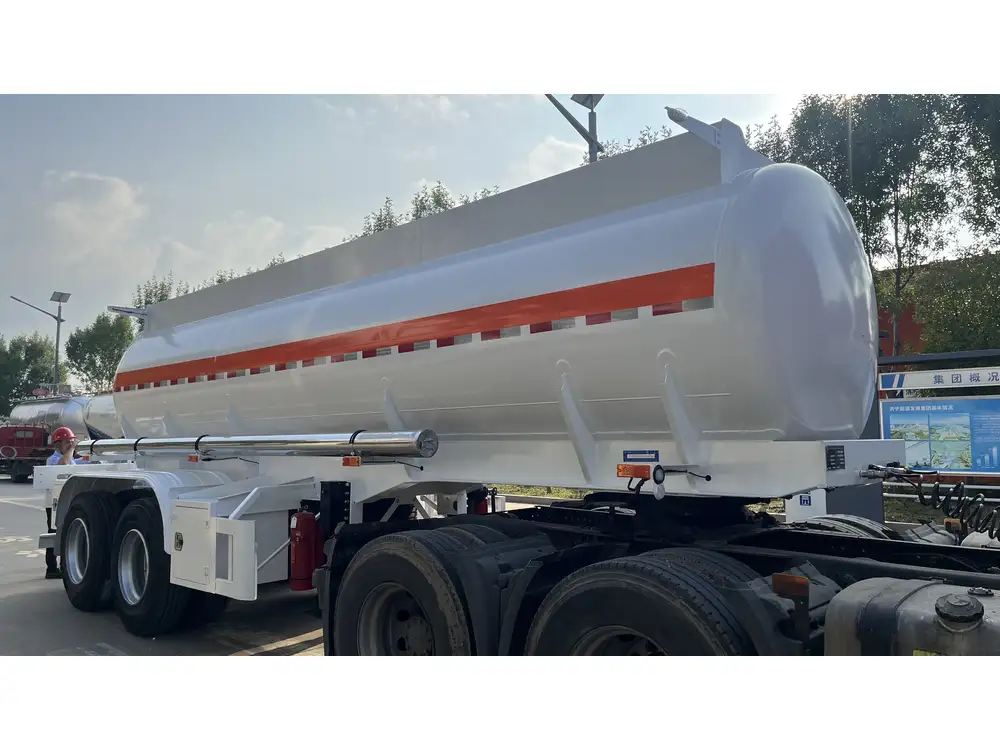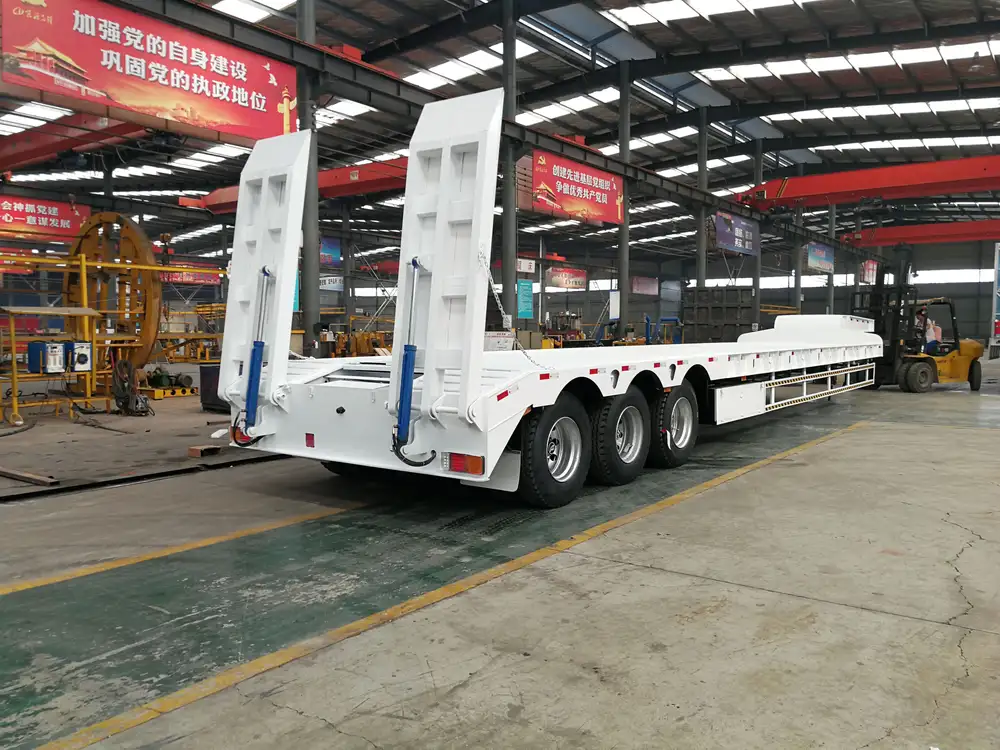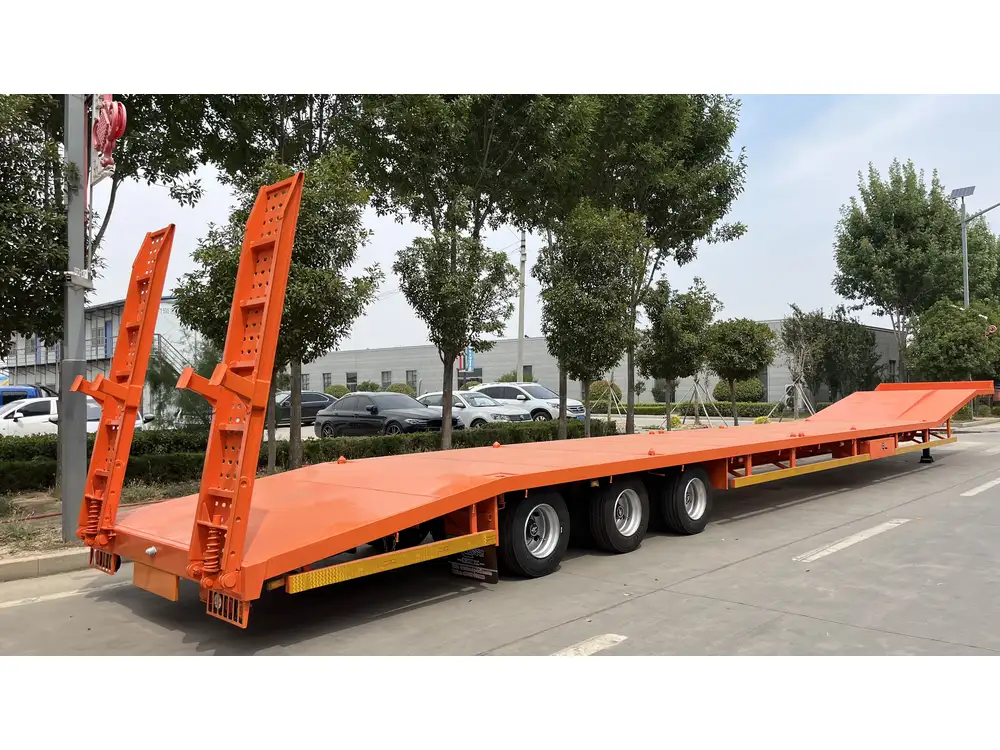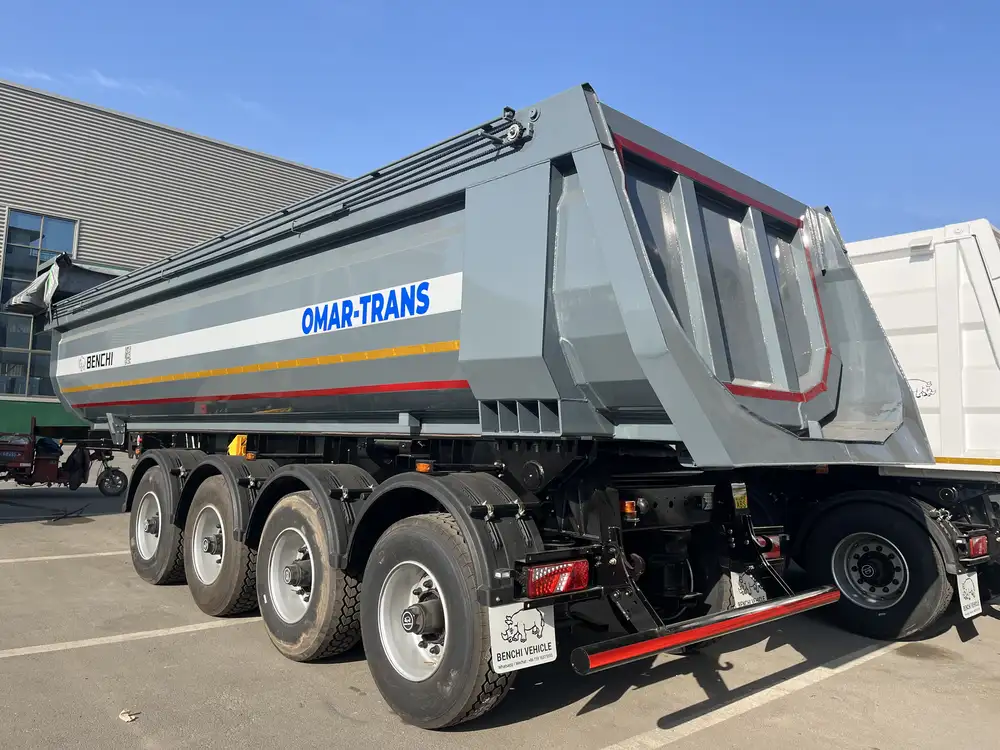Introduction to 2 Axle 40ft Skeletal Container Trailers
In the realm of logistics and transportation, efficiency and adaptability are paramount. The 2 axle 40ft skeletal container trailer stands out as a cornerstone for freight moving operations, particularly in intermodal freight transportation. Capable of carrying standardized shipping containers, these trailers provide the requisite durability and versatility essential for today’s fast-paced supply chains.
Advantages of 2 Axle 40ft Skeletal Container Trailers

Clarifying Versatility and Functionality
Intermodal Transportation: The skeletal design allows for easy transitions between different transport modes—truck, rail, and ship.
Reduced Weight: Unlike traditional trailers, skeletal models minimize the amount of steel used, resulting in lighter trailers that maximize payload capacities and fuel efficiency.
Container Compatibility: Specifically designed to accommodate 20ft and 40ft containers, enhancing their usability across diverse logistic needs.
Enhanced Cost-Efficiency
| Aspect | Benefit |
|---|---|
| Fuel Consumption | Lighter trailers result in lower fuel costs. |
| Maintenance Costs | Fewer components typically translate to reduced wear and tear. |
| Durability | Robust construction ensures a longer lifespan and reliability over time. |
Key Features of 2 Axle 40ft Skeletal Container Trailers

Structural Integrity
Material Composition: Typically constructed from high-strength steel and aluminum, these trailers offer optimal strength-to-weight ratios without sacrificing durability.
Design Elements: The skeletal structure of these trailers includes:
- Cross beams for enhanced support
- Reinforced attachment points to secure containers
- Adjustable height mechanisms for compatibility across various transportation methods
Suspension Systems
- Leaf Spring Suspension: Enhances load distribution and minimizes road impacts, providing smoother rides for both the driver and the cargo.
- Air Suspension: Allows for better handling and stability, particularly when navigating uneven terrain or during high-speed travel.
Technical Specifications
| Specification | Details |
|---|---|
| Length | 40ft (12.2m) |
| Width | 8.5ft (2.6m) |
| Height | 1.5ft (0.46m) |
| Load Capacity | Generally between 30,000 to 45,000 lbs |
| Axles | 2 axles with appropriate weight distribution |

Comparing Different Types of Container Trailers
Understanding how the 2 axle 40ft skeletal container trailer stacks up against other designs is crucial for transport professionals seeking the best solutions.
| Trailer Type | Advantages | Disadvantages |
|---|---|---|
| Skeletal Container Trailer | Lightweight, versatile, and easy to maneuver | Limited to flat loads (containers only) |
| Box Trailers | Protection from elements and theft | Heavier, reduced payload, and less flexibility |
| Reefer Trailers | Temperature control for perishables | More complex and often more expensive |
Key Considerations When Choosing a 2 Axle 40ft Skeletal Container Trailer
Understanding Load Requirements
Before committing to a purchase, assess the types of cargo you frequently transport. Calculating the weight-to-capacity ratio will help ensure you choose a trailer that meets specific logistic needs without overextending your budget.

Analyzing Terrain and Route Types
The balance between suspension systems, trailer length, and weight capability can significantly affect performance on different surfaces. Whether your routes include urban environments requiring tight navigation or highways with long stretches may dictate the best configuration of your trailer.
Compliance and Regulations
Staying informed about local, regional, and national regulations regarding trailer specifications, weight limits, and road safety can save headaches and financial penalties down the line. Ensure that the selected trailer aligns with all mandated requirements, including load safety protocols.
Maintenance Tips for Optimal Performance
Ensuring your 2 axle 40ft skeletal container trailer remains in peak operating condition will prolong its life and enhance safety and efficiency in transportation.

Regular Inspections
| Component | Frequency | Purpose |
|---|---|---|
| Brakes | Monthly | Ensure effective stopping power and safety |
| Tires | Weekly | Check for wear and inflation, avoiding blowouts |
| Frame and Body | Quarterly | Inspect for signs of rust, fatigue, or damage |
Lubrication and Adjustments
Grease All Moving Parts: Regular lubrication reduces friction and belt wear, essential for keeping the trailer operational.
Adjust Suspension Settings: Based on the type of load you are carrying, adjustments may be necessary for optimal handling and load distribution.
Cost Considerations
Investing in a 2 axle 40ft skeletal container trailer is not merely a purchase but rather a strategic long-term investment. Take into account:
Initial Costs: Evaluate upfront expenses but don’t overlook hidden costs related to features or warranties.
Operational Expenses: Fuel efficiency, maintenance, and insurance rates can dramatically alter overall expenses.
Resale Value: A robust design will retain value, providing a return on investment should the trailer no longer meet your needs.

Future Trends in Trailer Manufacturing
Sustainability in Manufacturing: As global logistics industries become more aware of environmental impacts, many manufacturers are adopting eco-friendly materials and processes.
Technology Integration:
- Telematics Systems: Real-time tracking provides vital information about the trailer’s location, load status, and maintenance needs.
- Smart Trailers: Advanced sensors and systems enhance user control and improve safety outcomes.
Conclusion
The 2 axle 40ft skeletal container trailer emerges as an indispensable asset in the logistics sector, combining versatility, durability, and cost-effectiveness into one package. As the landscape of transportation continues to evolve, understanding these trailers’ nuances will empower buyers to make informed decisions that align with their operational needs while leading to enhanced profitability and efficiency.
Choosing the right trailer can revolutionize how freight is handled, and with a focus on quality and adaptability, one can remain a front-runner in the competitive transportation sector.



